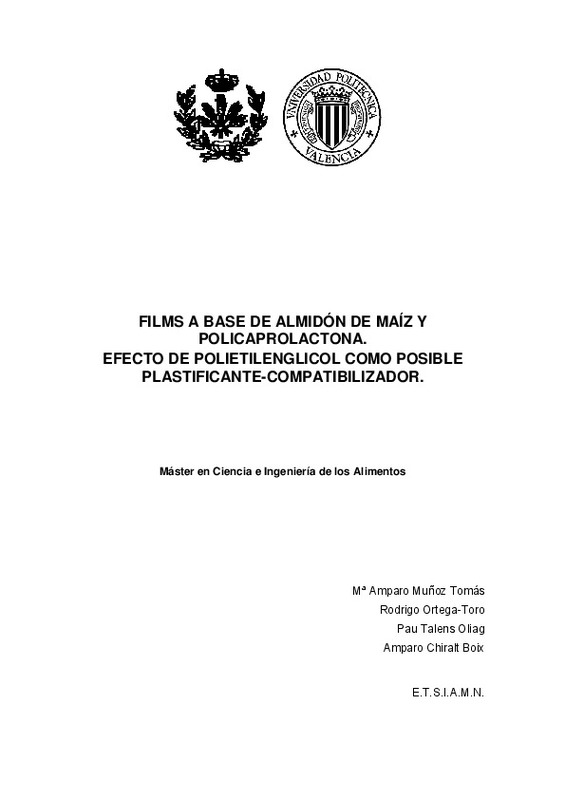JavaScript is disabled for your browser. Some features of this site may not work without it.
Buscar en RiuNet
Listar
Mi cuenta
Estadísticas
Ayuda RiuNet
Admin. UPV
Films a base de almidón de maíz y policaprolactona. Efecto de polietilenglicol como posible plastificante-compatibilizador
Mostrar el registro completo del ítem
Muñoz Tomás, MA. (2014). Films a base de almidón de maíz y policaprolactona. Efecto de polietilenglicol como posible plastificante-compatibilizador. http://hdl.handle.net/10251/57316.
Por favor, use este identificador para citar o enlazar este ítem: http://hdl.handle.net/10251/57316
Ficheros en el ítem
Metadatos del ítem
| Título: | Films a base de almidón de maíz y policaprolactona. Efecto de polietilenglicol como posible plastificante-compatibilizador | |||
| Autor: | Muñoz Tomás, María Amparo | |||
| Director(es): | Ortega Toro, Rodrigo | |||
| Entidad UPV: |
|
|||
| Fecha acto/lectura: |
|
|||
| Resumen: |
[ES] El objetivo del presente trabajo es evaluar la influencia de la adición de
polietilenglicol (PEG) como posible plastificante y/o compatibilizador, en las
propiedades estructurales, térmicas y fisicoquímicas de films ...[+]
[EN] The aim of this work was to study the influence of the addition of polyethylene
glycol (PEG) as a possible plasticizer and compatibilizer, in the structural,
thermal and physicochemical properties of corn starch and ...[+]
[CA] L’objectiu d’aquest treball es avaluar la influència de l’addició de polietilenglicol
(PEG) com possible plastificant y/o compatibilitzador, en les propietats
estructurals, tèrmiques y fisicoquímiques de films ...[+]
|
|||
| Palabras clave: |
|
|||
| Derechos de uso: | Reconocimiento - No comercial - Sin obra derivada (by-nc-nd) | |||
| Editorial: |
|
|||
| Titulación: |
|
|||
| Tipo: |
|
recommendations
Este ítem aparece en la(s) siguiente(s) colección(ones)
-
ETSIAMN - Trabajos académicos [3541]
Escuela Técnica Superior de Ingeniería Agronómica y del Medio Natural







